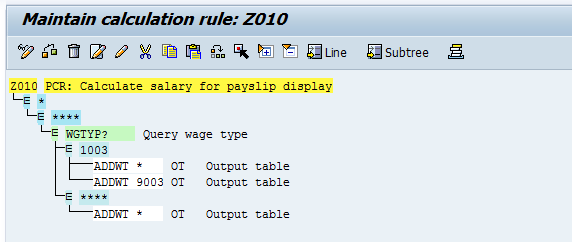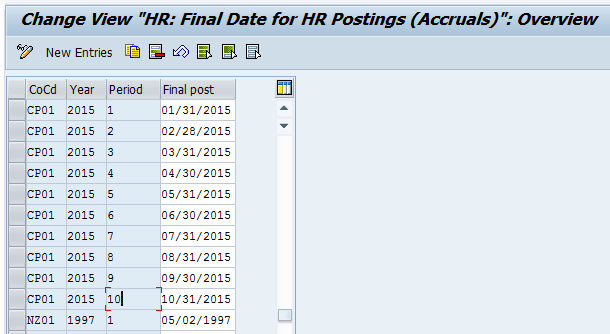Payroll users can often be overwhelmed by the variety and amount of errors encountered in daily operations. Learn how to categorize these errors logically, see how to resolve them, and get tips for avoiding them going forward.
Key Concept
In SAP payroll, various master data inputs, configuration setups, and integrations within SAP ERP HCM and Financial Accounting impact the accuracy of employees’ paychecks. It is essential to understand the different components so that appropriate checks and balances can be applied to each step. It is also important to note that most troubleshooting concepts for SAP ERP HCM on-premise payroll still apply to the cloud Employee Central Payroll model.
There are several steps involved in a typical cycle of payroll processing in an SAP system. Below is a summary of the three key processes:
- Maintenance of master data: Inputs to the payroll process include core HR master data, time interfaces and punches, benefits interfaces, tax and regulatory data, finance master data, and other payments and deductions.
- Payroll processing: A series of complex calculations are performed to arrive at gross pay, deductions, taxes, and net pay.
- Subsequent steps: Several post-payroll activities must be completed to finish the process, such as creating the bank file, check printing, posting to Financial Accounting and accounts payable, and statutory reporting.
As you can see, payroll processing is dependent on a variety of data-maintenance tasks, encompassing inputs from employees (e.g. address, bank, and withholding information), managers (e.g., transfers and leaves of absence), and HR administrators (e.g., life events and miscellaneous data updates). These dependencies also mean payroll is at risk for errors when data entry is not done properly. Appropriate steps are required to audit data quality prior to payroll processing. In this article, I review the most common errors and provide some tips for resolving them now, as well as for avoiding them in the future.
Five Common Master-Data-Related Issues in Payroll
Data validation before each payroll run is key to success. It’s critical to proactively identify any master-data-related issues before they get too far along the process and cause delays.
An effective data-validation process:
- Reduces the number of payroll errors
- Decreases instances of over- and under-payments, thus requiring fewer off-cycle payroll runs for corrections
- Provides more time for post-payroll reconciliation and validation activities
Typical master-data issues include missing mandatory infotypes or missing key fields on infotypes. The five most common data errors are:
- Division by zero not performed
- Missing cost center
- Missing mandatory information
- Locked personnel number
- Dummy Social Security numbers
In the following sections, I explore each of these common data errors in greater detail, as well as present tips for resolving them.
Issue #1 – Division by Zero Not Performed
As illustrated in
Figure 1, this error is raised in payroll personnel calculation rule (PCR) X013 when valuation bases are calculated.

Figure 1
A division by zero error
One common reason for this error is that the work hours per pay period field in infotype 0008 (basic pay) is left blank (
Figure 2). This field is used to calculate the valuation bases (hourly rate = employee basic pay, divided by the pay-period work hours). A blank value here results in a division by zero error.

Figure 2
An erroneous infotype 0008 (basic pay) with missing working hours per pay period data
This error can also occur under similar circumstances when using other standard and custom payroll rules. To avoid it when using operation DIVID in any payroll PCR, ensure that the divisor is always a non-zero value. An ad-hoc query can be built to report off this field as well.
Issue #2 – Missing Cost Center
This error is caused in financial postings when the cost-center assignment information in infotype 0001 (organizational assignment) is missing within active employee records. Typically, cost center is not a required field for payroll processing; however, a simple payroll PCR can be incorporated into a payroll schema to avoid this issue, as shown in
Figure 3.

Figure 3
A sample payroll PCR to validate employee cost center during payroll processing
You can also avoid this issue by building an ad-hoc query, or by putting standard reports in place, such as report S_AHR_61016362 (flexible employee data), to validate that all active employee records have a cost center maintained in infotype 0001 (organizational assignment).
Issue #3 – Missing Mandatory Information
This error is caused when mandatory information is missing for an employee, as illustrated in
Figure 4.

Figure 4
A mandatory infotype check error for an employee missing infotype 0210 (withholding information) for the federal tax authority
This error stems from using the standard global payroll function (GON), which validates the following information during payroll processing:
- For all countries: Infotype 0007 (planned working time)
- Country specific (US): Infotypes 0207 (residence tax area) and 0210 (withholding information) for the federal tax authority
You can avoid this issue by building an ad-hoc query or using a custom report to validate the mandatory infotypes required for payroll processing in a given country.
Issue #4 – Locked Personnel Number
This is a common error that occurs when an employee’s record is locked for master-data maintenance during payroll processing (
Figure 5).

Figure 5
A personnel number locked error
Standard report PC00_M44_UCPL is used to identify employees who are currently locked (
Figure 6). If the report is run with appropriate authorization, it provides an option to delete the sessions of the locked users or, alternatively, to send them an email via SAPOffice. However, when deleting user sessions, the system might fail to save potential transactions in progress, so use this option with caution.

Figure 6
Report to identify locked employee records during payroll runs
Issue #5 – Dummy Social Security Numbers
Dummy Social Security numbers, for example, 999-99-9999, are sometimes used as placeholders when employees are hired until the real information becomes available. This error occurs if a dummy number remains in the system when payroll is being processed (
Figure 7). To avoid this issue, ensure that all new hires provide their actual Social Security numbers prior to payroll processing. This is especially relevant for inpatriates or first-time immigrant employees who are part of US payroll.

Figure 7
A dummy Social Security number error in payroll
Table 1 shows some common master data issues and potential solutions for resolving them.

Table 1
Common master-data issues and potential solutions
Five Common Configuration-Related Issues in SAP ERP HCM Payroll
In an ideal payroll scenario, configuration issues should not occur in production. To ensure that they don’t happen, it’s important to prioritize SAP configuration fixes and resolve them in a timely manner. This includes defining appropriate service level agreements (SLAs) for issues based on complexity, remembering that most configuration errors are a result of insufficient testing.
In my experience, the top five configuration errors are:
- No rule in key XXXX
- End of posting not found in configuration table T51A1
- Termination in operation ERROR
- No entry in table T511P or T511K
- Missing entry in table T5UTI
The following sections offers some insights into why these errors occur, along with some potential ways of resolving them.
Issue #1 – No Rule in Key XXXX
This issue arises when a payroll PCR does not have logic for all the wage types being processed in the rule (
Figure 8). More specifically, the error occurs when the payroll PCR is called in the schema using a generic (GEN) option as a parameter.

Figure 8
A PCR error showing no rule for certain wage types
Figure 9 shows the original PCR structure that caused the issue in
Figure 8. Since PCR Z010 is called in the schema using GEN as the parameter, the rule looks for logic for all the wage types being processed.

Figure 9
Payroll PCR showing rules for specific wage types only
This error can be resolved by including logic for each wage type being addressed (
Figure 10). If specific logic only applies to a few wage types, a default logic, added to the output table, can be included for all others.

Figure 10
Updated PCR showing a generic branch for all wage types
There are two ways in which payroll PCRs can process wage types. They are:
- Call the wage types generically in the schema or sub-schema during processing. This is done using the second parameter (Par2) value of GEN in the payroll schema. This option requires each wage type to have a default logic assigned to it, even if just one wage type has been configured with custom logic.
- Call only specific wage types in the schema or sub-schema during payroll. This is done using a blank value for Par2 in the schema when the PCR is called. This option does not require a default logic to be assigned.
Issue #2 – End of Posting Not Found (T51A1)
This issue occurs when the accrual/reversal fiscal periods are not configured for month-end accruals (
Figure 11).

Figure 11
An end of posting not found in table T51A1 error
You can avoid this issue by setting up the required month-end accrual calculations by defining (
Figure 12):
- Posting dates by payroll area (table T549S)
- The latest document creation dates (LDCD) by payroll area (table T549S)
- Month-end closing dates by company code and fiscal year/period (table T51A1).
Figure 12 shows the entries that need to be maintained in the T51A1 configuration table to resolve the issue in
Figure 11.

Figure 12
The entries in table T51A1 to resolve the end-of-posting-not-found issue
Issue #3 – Termination in Operation ERROR
ERROR is a standard operation that could be used under many circumstances in the payroll schema. In the example in
Figure 13, a custom logic has been created to validate basic pay against a payroll constant value of $10,000 and to raise an error during payroll processing if a mismatch occurs.

Figure 13
An example of how operation ERROR can be used
Figure 14 shows an example of payroll PCR leveraging the standard operation ERROR to detect mistakes in payroll processing.

Figure 14
Leverage operation ERROR to find mistakes in payroll processing
In this example, resolving the error is dependent on validating and correcting the employee’s basic pay against the cap that has been defined as a constant ZBASI in the configuration table T511P. In general, the PCR is key to effectively troubleshooting termination errors raised by operation ERROR. In general, it’s important to name the PCR appropriately so it provides a clue about the cause.
Two other examples in which operation ERROR can be used to raise hard errors during payroll processing include validating:
- If all active employee records have an acceptable cost center.
- Specific wage type values that are calculated during payroll processing, but that typically cannot be pre-validated prior to starting the payroll run.
Tip!
Keep in mind that detailed error messages cannot be raised using operation ERROR. Instead, the description of the PCR and technical knowledge are required to troubleshoot any hard errors that arise.
Issue #4 – No Entry in Tables T511P or T511K (Payroll Parameters)
This issue occurs when payroll constant values are missing for a specific pay period (
Figure 15).

Figure 15
A missing entry in table T511P error
The table in
Figure 16 shows that the constant has been defined only for validity dates January 1, 2010, to December 30, 2014. This also implies that using the constant for pay periods ending after December 30, 2014, could result in the aforementioned error shown in
Figure 15.

Figure 16
Configuration table T511P showing entries for constant ZBASI
This error can be resolved by maintaining the payroll constant for the duration of the pay period being processed. A better practice for any payroll value is to use the payroll constants in table T511P (for amounts) or table T511K (for numbers) for reference in payroll schemas instead of hard-coding them directly. Keep in mind that the values defined in these tables are read as of the end date of the payroll period being processed. If the values are missing, the system generates the error message, No entry in table T511P.
Issue #5 – Missing Entry in Table T5UTI (Employer ID Number)
This issue (shown in
Figure 17) occurs when a specific tax authority/tax type does not exist for a tax company (i.e., tax entity). This may happen when a company starts operating in a new state or under a new tax authority, or if employees move to a jurisdiction that has not been administered by the company thus far.

Figure 17
An error message for missing entry in table T5UTI
This issue can be resolved by maintaining the tax authorities for the respective tax companies (i.e., tax entities) in configuration table T5UTI.
Table 2 lists some other typical configuration-related issues, potential solutions, and tips for resolving or avoiding them.

Table 2
Additional common SAP configuration-related issues and potential solutions
Validation Checklists for SAP ERP HCM Payroll Processing
There are some key steps that can be incorporated into regular payroll processing to try and minimize errors. I have outlined them below, and grouped them into steps for before, during, and after the payroll run.
Pre-Payroll Steps
1. Validate employee counts from previous payroll by payroll area:
- Account for new hires and separations
2. Validate mandatory infotypes for all active employees:
- Core HR: Infotypes 0000 (actions), 0001 (organizational assignment), 0002 (personal data), 0006 (addresses), 0007 (planned working time), 0008 (basic pay), and 0009 (bank details).
- Tax (for US): Infotypes 0207 (residence tax area), 0208 (work tax area), 0209 (unemployment state), and 0210 (withholding information).
3. Ensure that all active employees have a valid Social Security number (for US) or a valid national ID (for other countries).
4. Ensure that all active employees have an assigned cost center.
5. Validate work hours per pay period in infotype 0008 for all employees.
Payroll Steps
1. Check and confirm the list of employees locked for payroll (in infotype 0003):
- This can include pre-hires, employees with known issues, and so on.
2. Determine if any SAP configuration changes require forced retroactivity:
- Most SAP configuration updates do not trigger retroactive-payroll calculations automatically—it must be done manually. Therefore, it’s essential to remember this when configuration changes are applied retroactively.
Tip!
Process payroll simulations multiple times before running production payroll. This helps to identify and address errors in a timely fashion, and ensures that payments and subsequent payroll processing activities are not delayed.
Post-Payroll Steps
1. Run payroll journal (PC00_M10_CLJN) or wage type reporter (PC00_M99_CWTR) to compare wage type totals to previous pay periods.
- Additional validation activities may be needed for significant variances.
2. Validate arrears (ARRRS) and deductions not taken (DDNTK) via the payroll journal.
- Determine if any large arrears need clearing with a payment model.
3. Run claims report (PC00_M10_CLMS) to validate employee overpayments.
- Determine if any claims need clearing with a payment model.
4. Validate employees with zero-net checks and those with significantly large pay.
Integration Considerations with Financial Accounting
In addition to these steps, there are two integration scenarios that should be considered when integrating payroll with finance. They are:
1. Establish governance processes around locking of cost centers.
- Locking cost centers requires completing payroll posting for the current posting period and moving employees into another active cost center.
2. Establish governance processes around opening and closing of fiscal periods.
- Remember month-end accrual posting requires a fiscal period (for the following month) to be opened earlier than usual.
Typical Issues Encountered with SuccessFactors Employee Central Payroll Integrations
Here are some critical considerations to take into account when integrating Employee Central with Employee Central Payroll.
1. Replicate the organizational structure only if necessary, since it is not as straightforward as the employee replication. Some specific considerations include:
- Which components of the SuccessFactors organizational structure are needed in the SAP ERP HCM system (e.g., business units, divisions, or departments)?
- Does the SAP system require an exact organizational structure for any workflow purposes?
- Are there programs in the SAP system that use organizational or reporting structures?
2. As much as possible, align the Employee Central picklists to the Employee Central Payroll drop-down values. This avoids additional manual mappings in the middleware.
3. Role-based permissions in Employee Central need to align with the security roles created in the Employee Central Payroll instances.
4. Establish governance processes for key configuration fields between Employee Central and Employee Central Payroll.
Table 3 lists a few examples of field mapping between Employee Central and Employee Central Payroll.

Table 3
Mapping of key fields between SuccessFactors Employee Central and Employee Central Payroll
Some Final Tips
Payroll processing has several inherent dependencies that must be considered ahead of time for a smooth payroll run. Here are a few guidelines to keep in mind:
- Establish a strong governance process for each data element impacting payroll, since high-quality data inputs are critical to trouble-free operations.
- Enforce thorough user-acceptance testing for each configuration fix and system upgrade.
- Understand and document the end-to-end payroll processing, along with lessons learned.
Similarly, here are some suggestions for expediting your next payroll implementation project:
- Simplify and standardize payroll practices across locations (e.g., for vacation accrual, bonus accrual, overtime and shift premiums, and so on).
- Include a comprehensive parallel testing step to validate the various calculations in the new system, and document differences, if any.
- Keep additional reporting/reconciliation needs in mind—to validate arrears, claims, and retroactive differences, among others.
- Consider using process models for payroll processing; this helps streamline the steps and brings overall consistency to the process.
Disclaimer
As used in this document, “Deloitte” means Deloitte Consulting LLP, a subsidiary of Deloitte LLP. Please see www.deloitte.com/us/about for a detailed description of the legal structure of Deloitte LLP and its subsidiaries. Certain services may not be available to attest clients under the rules and regulations of public accounting.
This article contains general information only and Deloitte is not, by means of its publication, rendering accounting, business, financial, investment, legal, tax, or other professional advice or services. This article is not a substitute for such professional advice or services, nor should it be used as a basis for any decision or action that may affect your business. Before making any decision or taking any action that may affect your business, you should consult a qualified professional advisor.
Deloitte shall not be responsible for any loss sustained by any person who relies on this article.
Parvatharajan Muthusami
Parvatharajan Muthusami is a manager with Deloitte and has over 10 years of experience in delivery of US and global SAP payroll projects. He has had hands-on delivery roles and led teams in the areas of SAP payroll and time management for various clients in the US and globally. Parvatharajan functional areas of focus include: SAP payroll, time management, benefits and core HR (on-premise and cloud).
You may contact the author at
SAP@Deloitte.com.
If you have comments about this article or publication, or would like to submit an article idea, please contact the
editor.





























